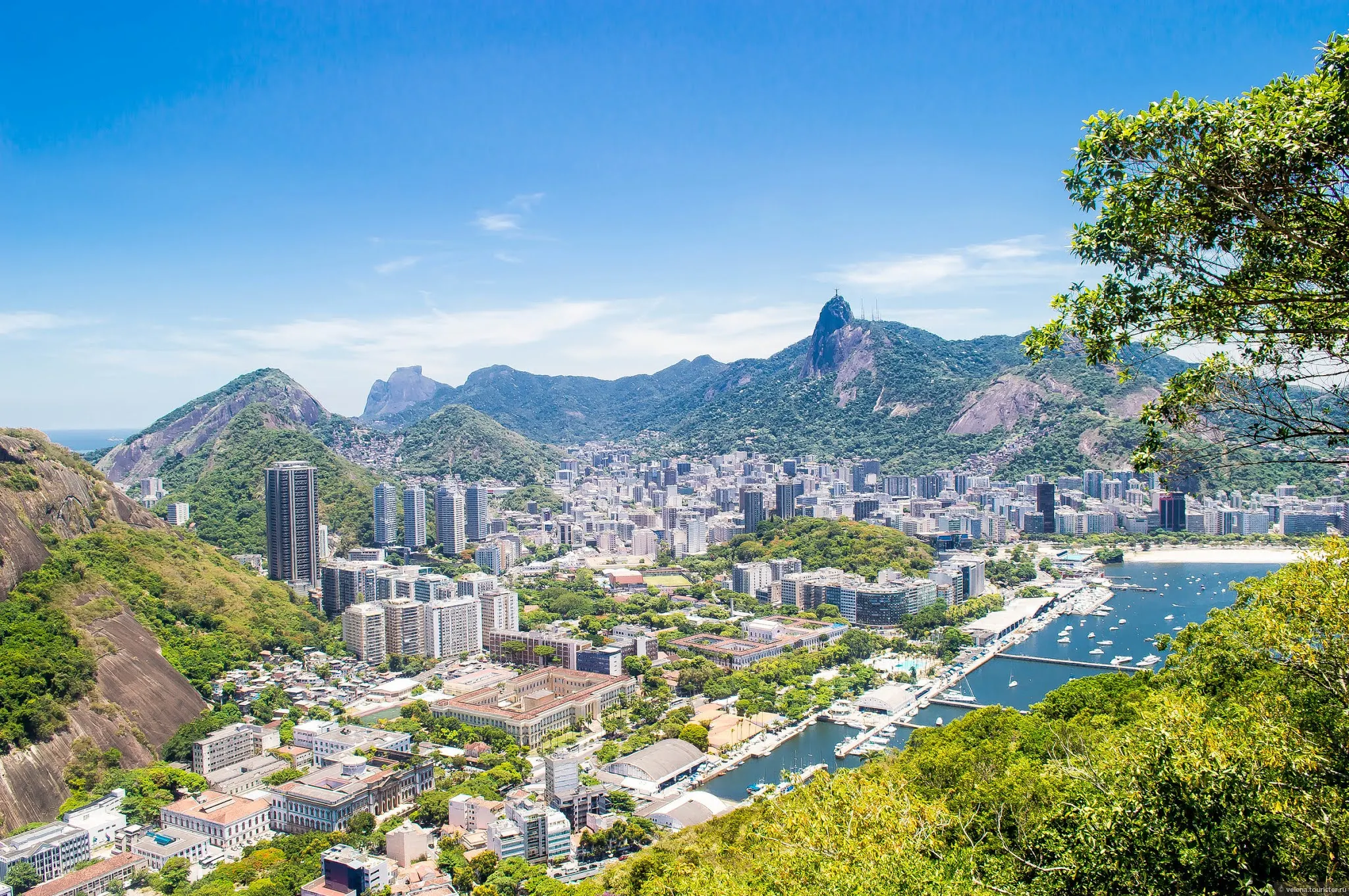Rio de Janeiro is one of the most beautiful cities in South America, located in the southeastern part of Brazil on the shores of the Guanabara Bay, unique in its natural beauty. It is the second largest (after São Paulo ) city in Brazil, the capital of the state of Rio de Janeiro, and until 1960 - the capital of all of Brazil.
 |
| Rio de Janeiro |
The name Rio de Janeiro, translated from Portuguese, means the January river, because the Portuguese who discovered it in January 1502 took the Guanabara Bay as the river mouth, which is not surprising - the bay is separated from the ocean by a narrow strait only 1.5 km wide. The official date of the foundation of the city is March 1, 1565. “God created the world in six days, and on the seventh day he created Rio de Janeiro” - this is how the Brazilians say with love about their fabulously beautiful city. It is no coincidence that Rio de Janeiro has the unofficial nickname "Amazing City" (Cidade maravillosa), because there are so many natural, historical and cultural beauties concentrated in it that it would be more than enough for several cities!
Rio de Janeiro owes its beauty, first of all, to its excellent location, the city stretches along an endless strip along the coast with wonderful beaches and rocky hills on an area of 1265 km². Copacabana, Ipanema, Leblon - the names of these iconic Rio beaches have been known to us since childhood and are strongly associated with Rio de Janeiro! And two magnificent mountains - Corcovado with the statue of Christ the Redeemer dominating over the city and Pan de Asucar have long become the hallmarks of Rio! Nature is surprisingly generous to this city - the emerald green of tropical forests, the blue of lagoons and rivers, hills growing from the bay and snow-white beaches, all this creates an idyllic picture of a paradise on Earth!
 |
| Rio de Janeiro |
The population of Rio today is 6,476,631man, it is one of the most densely populated cities in the world, whose inhabitants call themselves "karyokas". The etymology of the origin of this name has nothing to do with Rio, it came from the phrase "house of the white" (casa de branco) and appeared during the arrival in Brazil of the Portuguese colonialists, whom the Indians called - white-skinned people. Cariocas differ from their other compatriots in disposition and temperament - they are more sociable and liberated. They can be characterized in one phrase - charming ease. However, there is also a downside to the coin - karyokas are distinguished by extreme non-binding, which should be remembered if you agree with them about something. A favorite phrase - amanha, that is, tomorrow, does not mean at all that it will happen exactly tomorrow. The ethnic composition of the population is very variegated. It was formed under the influence of three factors: local Indian tribes, European settlers from Spain and Portugal, and Africans brought here by the colonialists as slaves. A large proportion of the population in the country are mestizo.
Rio de Janeiro is not only a city of eternal celebration, but also amazing contrasts. On the slopes of the surrounding mountains, the squalid dwellings of the poorest areas of the city - the favelas - are huddled. There are several hundred of these favelas in the city, which contain about 20% of the entire population of Rio. For example, the largest favela in Rio, Rocinha, has more than 50,000 inhabitants. And although the standard of living in the favelas has increased significantly recently, and the local authorities are trying to put things in order there, it is still better not to travel to these areas on your own, because the criminality and sanitary conditions in the favelas leave much to be desired.
 |
| Rio de Janeiro |
If you still want to see life in the favelas from the inside, you can book an organized tour at one of the local agencies. Typically, the program of such a tour includes visiting the houses of the inhabitants of the favelas and communicating with them. And the views of the city from the hills of the favelas are simply amazing! Favelas are also famous for the fact that it was here that numerous samba schools were born.
The synonyms for Rio de Janeiro are beaches, football, samba and carnival. An amazing symbiosis of nationalities and cultures gives the city a unique brightness and originality! The famous carnival, which is held here every year in late February - early March, is a colorful spectacle, famous all over the world for its incendiary dances of various samba schools. Nowhere in the world is there a more spectacular carnival than in Rio de Janeiro! For five days, the city turns into one big platform for celebration and unbridled fun. Most tourists try to get to Rio at this time, but remember that prices for hotels and services during this period skyrocket.
 |
| Rio de Janeiro |
Climate and weather in Rio de Janeiro
Rio de Janeiro's climatic conditions are directly influenced by the Atlantic Ocean and are characterized by hot summers and mild winters. This type of climate is called the Atlantic tropical climate.
In Rio de Janeiro, humidity is always high, from November to March it is hot, the maximum temperature during this period can reach 35-40 degrees, and from April to September it is relatively cool, it often rains. The most unfavorable month for a trip is July: it often rains and is quite cool.
In general, Rio's climate is conducive to excellent recreation all year round. The average water temperature per year does not drop below +20 C °, and the average annual temperature is also very suitable for a good rest all year round - on average +23 C °.
